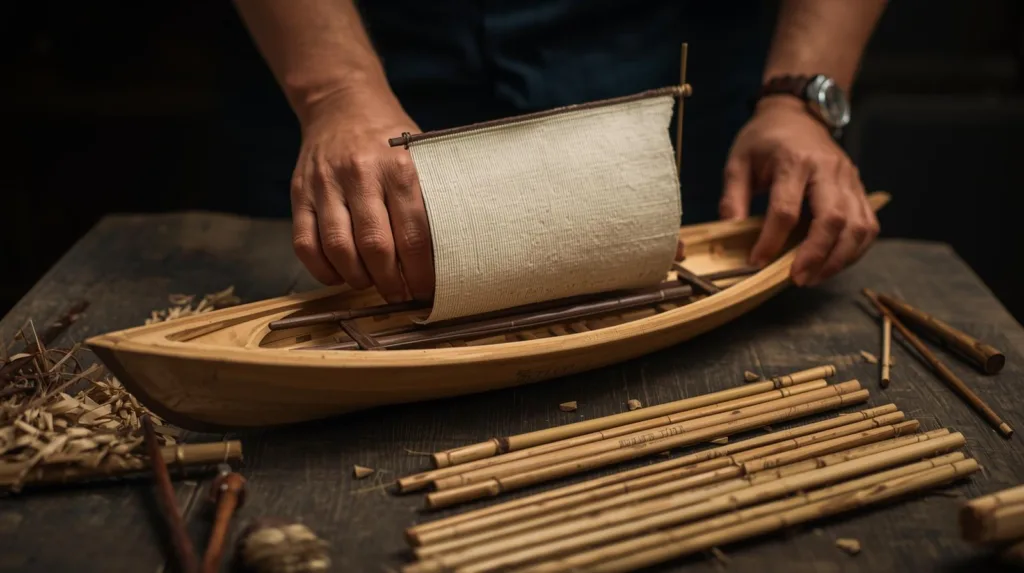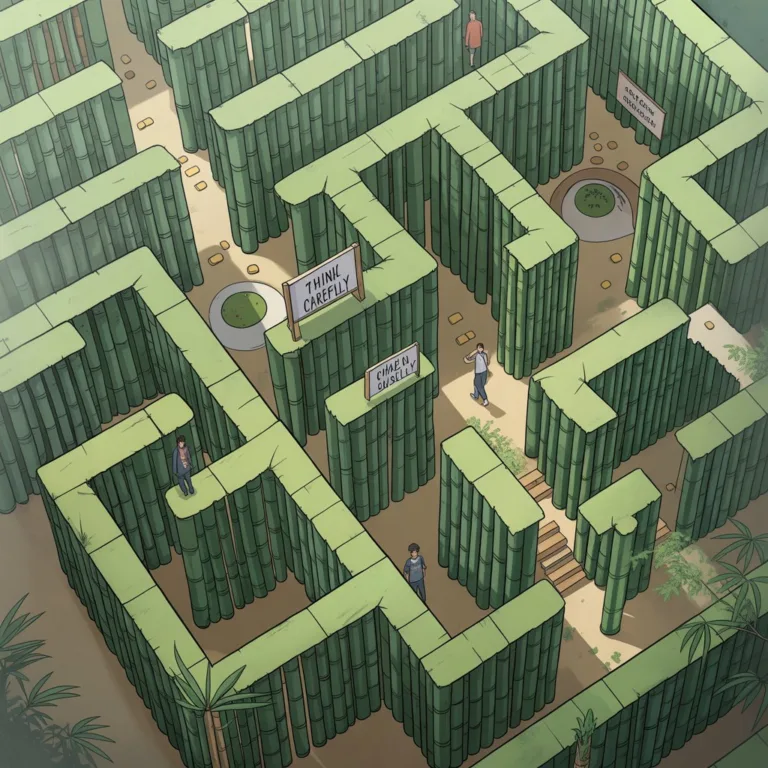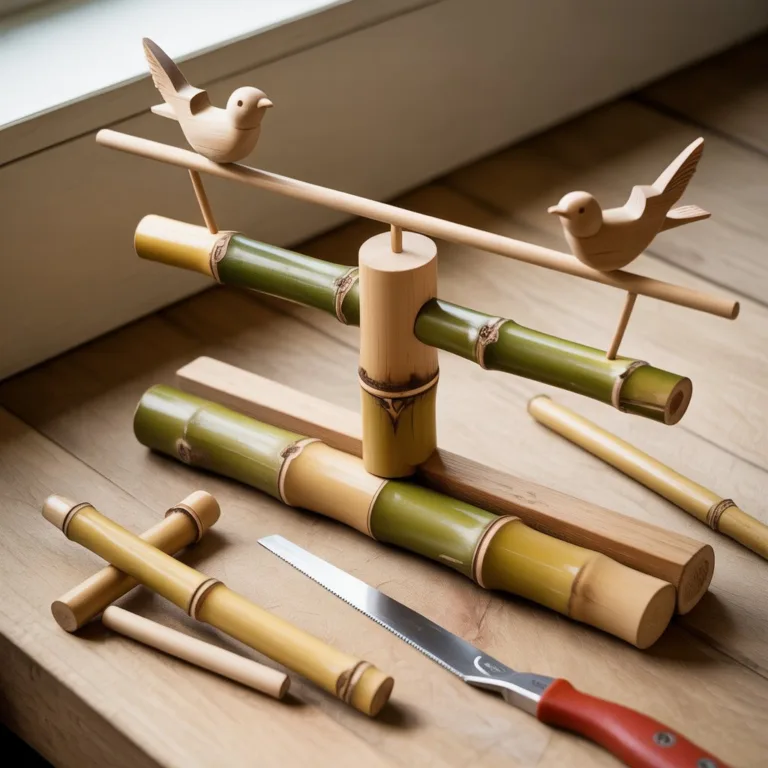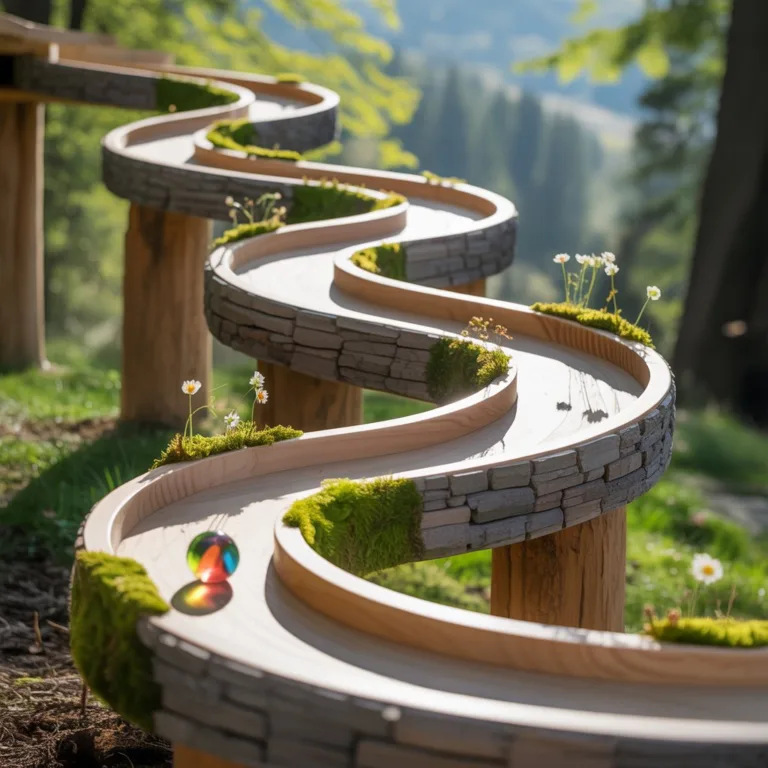Creating a mini boat from bamboo pieces is a fascinating project that combines craftsmanship, creativity, and sustainability. Bamboo is lightweight, durable, and readily available, making it an ideal material for constructing small-scale boats. Whether you are a hobbyist looking to explore DIY projects, a parent planning an educational activity with children, or a sustainability enthusiast, building a bamboo mini boat is an engaging and rewarding experience.

The process allows you to explore principles of buoyancy, balance, and basic engineering while developing practical skills like cutting, assembling, and finishing a small wooden structure. Beyond the practical side, crafting a bamboo mini boat offers a chance to appreciate natural materials and explore eco-friendly alternatives in creative projects.
Understanding Bamboo as a Craft Material
Why Bamboo is Ideal for Mini Boats
Bamboo has unique properties that make it highly suitable for small-scale boat construction:
- Lightweight Strength: Bamboo is surprisingly strong relative to its weight, allowing it to float and withstand handling.
- Water Resistance: Bamboo has a natural water-resistant quality, which helps prevent rapid degradation when in contact with water.
- Flexibility: Bamboo can bend slightly without breaking, which helps absorb impacts during play.
- Sustainability: Bamboo grows quickly and regenerates easily, making it an eco-friendly material.
Choosing the Right Bamboo
Not all bamboo is created equal. For mini boat building:
- Select dry bamboo that is free from cracks or splits.
- Choose medium-thick pieces for the boat’s base and hull; thinner pieces are suitable for decorative parts, masts, or supports.
- Avoid bamboo with insect damage or significant knots that could weaken the structure.
Designing Your Mini Bamboo Boat
Determining Boat Dimensions
Before you start cutting, decide on the size of your mini boat. A standard size for beginners could be:
- Length: 12–18 inches
- Width: 4–6 inches
- Height: 3–5 inches
Adjust dimensions according to the intended water type. Smaller boats float better in calm waters like ponds or bathtubs, while slightly larger boats can handle gentle streams.
Planning the Structure
The basic bamboo mini boat consists of:
- Hull: The main body, which provides buoyancy.
- Deck: A platform where masts, sails, or decorations can be mounted.
- Keel (Optional): A central strip beneath the hull to improve stability.
- Masts and Sails (Optional): Bamboo sticks with paper, cloth, or lightweight fabric sails.
Sketching a simple blueprint ensures that all pieces fit together, minimizing mistakes during assembly.
Tools and Materials Needed
Essential Materials
- Bamboo pieces of varying lengths and thicknesses
- Eco-friendly glue or wood adhesive
- Small nails or pins (optional for reinforcement)
- Lightweight sandpaper
- Natural fibers, string, or thin twine (for binding)
- Fabric or paper for sails (optional)
Tools
- Handsaw or bamboo cutter
- Hammer or small mallet
- Drill or awl (for making pilot holes)
- Clamps (optional, for holding glued pieces)
- Measuring tape and pencil
Preparing Bamboo Pieces
Cutting and Shaping
Cut bamboo according to your planned dimensions:
- Hull Pieces: Trim bamboo to match the length and width. Flatten sections where possible for better stability.
- Deck: Use thinner, more flexible bamboo pieces. Sand edges to remove splinters.
- Masts and Supports: Cut to proportional lengths, ensuring they are balanced to prevent tipping.
Sanding and Finishing
Smooth all cut surfaces using sandpaper to avoid injury and improve adhesive bonding. Focus especially on the edges and ends of bamboo pieces, which can be sharp.
Optional Treatments
If you want longer-lasting mini boats:
- Apply a thin layer of eco-friendly sealant to protect bamboo from water damage.
- Avoid heavy varnishes that add weight and may affect buoyancy.
Constructing the Hull
Basic Assembly Techniques
- Lashing Method: Use twine or natural fiber to tie bamboo pieces side by side tightly. This method allows flexibility and mimics traditional bamboo raft construction.
- Gluing Method: Apply wood glue along contact surfaces, pressing pieces together. Use clamps until fully dry for stability.
- Combination: For added durability, glue the pieces first, then lash edges with twine for extra security.
Forming a Stable Base
- Align bamboo pieces parallel for the hull’s main structure.
- Add crossbars beneath the hull for support and to maintain shape.
- Ensure the hull sits flat and level to prevent tilting when placed in water.
Adding Deck and Features
Constructing the Deck
- Use smaller bamboo strips to create a flat deck over the hull.
- Secure with glue or twine, leaving gaps for water drainage if desired.
Adding a Keel or Stabilizer
- Attach a thin bamboo strip along the center bottom of the hull.
- This improves directional stability, especially if the boat will carry sails or decorations.
Installing Masts and Sails
- Drill small holes at designated spots for masts.
- Insert bamboo sticks vertically; secure with glue or twine.
- Attach lightweight fabric, paper, or plastic as sails, adjusting size according to the mast height.
Balancing and Testing
Buoyancy Test
- Place the mini boat in a shallow water container.
- Ensure it floats evenly without tipping.
- Adjust weight distribution by trimming bamboo pieces or repositioning the deck.
Stability Adjustments
- If the boat tilts, add small bamboo strips to the lower side to counterbalance.
- Ensure sails do not create excess wind resistance that could tip the boat.
Decorative and Functional Enhancements
Painting and Personalizing
- Use water-based, non-toxic paints for decoration.
- Add miniature flags or embellishments for visual appeal.
Adding Movable Parts
- Hinged rudders or small oars can be added for play functionality.
- Lightweight wheels or paddles can enhance educational demonstrations about movement and forces.
Educational and Creative Applications
Building a bamboo mini boat is more than just a craft—it’s a learning opportunity:
- Physics Lessons: Explore buoyancy, center of gravity, and stability.
- Environmental Education: Understand sustainable materials and eco-friendly construction.
- STEM Skills: Practice measuring, cutting, and assembling while solving design challenges.
- Art and Creativity: Personalize boats and explore design variations.
Fun Activities
- Conduct mini boat races in ponds, pools, or streams.
- Experiment with different hull shapes and sail designs to see how they affect speed and balance.
- Incorporate bamboo mini boats into school projects or maker workshops.
Safety Tips
- Always supervise children during cutting and assembly.
- Wear gloves and eye protection when sawing or sanding bamboo.
- Use non-toxic adhesives and paints to ensure safety.
- Test the boat in shallow water before deeper placement to prevent loss or accidents.
Eco-Friendly Considerations
- Source bamboo responsibly, avoiding endangered species.
- Reuse scraps for other crafts, such as miniature bridges, plant supports, or coasters.
- Avoid synthetic glues or paints if possible, opting for natural or water-based options.
Troubleshooting Common Issues
- Boat Sinks: Check for water-logged bamboo or improper weight distribution.
- Tipping Over: Adjust mast height, reduce sail size, or rebalance hull pieces.
- Loose Assembly: Reapply glue or reinforce with twine.
Building a mini boat from bamboo pieces is a project that blends creativity, education, and sustainability. With the right materials, planning, and patience, you can construct a functional, visually appealing boat that floats and inspires. These small-scale boats not only serve as playful toys but also demonstrate fundamental principles of physics and environmental awareness.
Experiment with different hull designs, sail shapes, and decorative elements to expand your skills. As you gain confidence, you can even create miniature fleets or scale-up designs for larger educational projects. Bamboo mini boats are more than crafts—they are a bridge between hands-on learning, eco-conscious practices, and imaginative play.

Elena Mora is a creative educator and eco-craft enthusiast who specializes in bamboo musical instruments and sustainable toys for children. She believes that hands-on learning through play teaches kids about creativity, music, and environmental responsibility.



